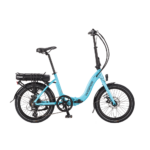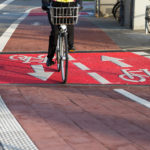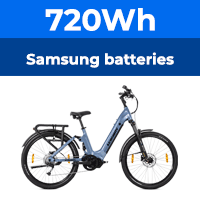Up for a challenge?
- Thread starter Waspy
- Start date
It already has a motor on the front. It only needs a battery and controller to make it go. In fact it would probably go with just a battery and a switch.Let's see someone electrify this then.
What could possibly go wrong?

Making it go is not going to be a problem, but making it stop is. Look at the brakes!
Everything about that franken-bike is wrong. I expect it would crash inside two miles unless ridden extremely slowly. I can hardly imagine how difficult it would be to keep it going where it was supposed to be going.It already has a motor on the front. It only needs a battery and controller to make it go. In fact it would probably go with just a battery and a switch.
Making it go is not going to be a problem, but making it stop is. Look at the brakes!
Why would anyone make something like that, and why would anyone buy it?
What is worse, it would probably have cost a fortune to buy.
Last edited:
God help the riders if it got up to any kind of speed.Looking on the positive side there's plenty of room to fit a down tube battery.
Anyone with an arch nemesis? park the above bike unlocked outside their favourite boozer on a Friday night.
Maybe it was back pedal brakes? Edit. Apparently it was designed for the track not the road as it was too impractical so probably didn't need brakes.Humber had a second go at an e-tandem in 1899:
View attachment 64090
Lead acid batteries and didn't appear to have any brakes!
Previous year model below:
View attachment 64091
Love the use of the word accumulators for rechargeable batteries.
Last edited:
From the late 1890s for about a decade, track racing early electric assisted bicycles was apparently a popular fad. Early cycling held many oddities like this.Apparently it was designed for the track not the road as it was too impractical so probably didn't need brakes.
Calling rechargeable batteries accumulators historic too. Even in my long lifetime I remember how we took the transparent glass tank "accumulator" that powered our "wireless set" (radio) to the local electrical shop to be charged once a week!
.
My grandfather always spoke of them that way. At one time he had an 'accumulator' powered radio, and every now and then, he took his accumulator to the wireless shop and had it recharged and topped up with acid. I can remember the shop was still there when i was a small boy. It had a grumpy old chap in a brown overall working there. I dont think he had a lot of business then, but most radios had valves at that time and the old capacitors used to break down, and big old resistors would burn out, so he could probably eat and pay his rent on what trade he had.Love the use of the word accumulators for rechargeable batteries.
Last edited:
Related Articles
-
 MTF Enterprises announces acquisition of EMU Electric Bikes
MTF Enterprises announces acquisition of EMU Electric Bikes- Started by: Pedelecs
-
 Wisper 806T folding bike wins Which? ‘Best Buy’
Wisper 806T folding bike wins Which? ‘Best Buy’- Started by: Pedelecs
-
 Sustrans calls for protected cycle lanes
Sustrans calls for protected cycle lanes- Started by: Pedelecs
-
 Amazon launch their first UK e-cargo micromobility hub
Amazon launch their first UK e-cargo micromobility hub- Started by: Pedelecs





